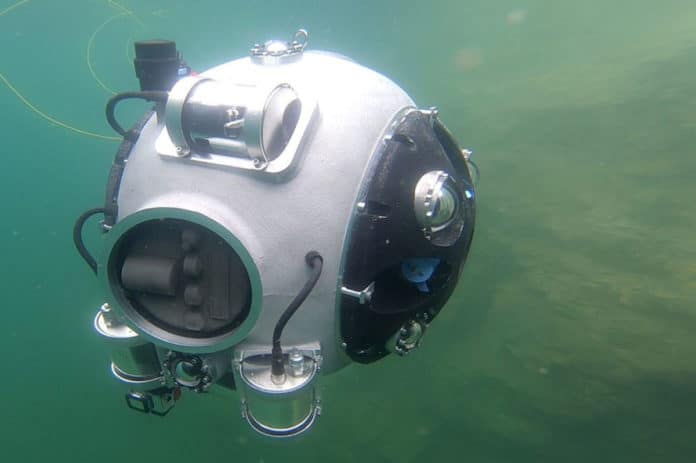There are thousands of mines in Europe that were abandoned up to a century ago, after which they naturally filled with groundwater. The maps of their tunnels that were previously made may no longer be accurate. Sending divers in to map the tunnels could be highly risky, and de-watering without a priori knowledge of the mineralogical composition is impossible because of its high costs.
To address this, an international team of researchers, including researchers from Universidad Politécnica de Madrid (UPM), has developed an autonomous underwater robot that maps the flooded tunnels of abandoned mines.
Built by UNEXMIN European project, the robot called the spherical ‘UX-1a’ Robotic Explorer is aimed to collect the geological information about these abandoned mines. That information along with the tunnel maps rebuilt by the robots, will be essential to decide whether it is economically viable to reopen these mines or not.

The spherical shaped robot is equipped with five digital cameras and rotating laser line projectors to produce 3D maps of the tunnels. Moreover, a multispectral camera, a unit for measuring gamma radiation and a water sampling system are added into the device, all of which the robot will use to search for remaining minerals deposits.
Propulsion is provided by recessed thrusters, powered by a lithium battery that should be enough for up to five hours of runtime per charge.
The researchers have already tested the UX-1a in mines located in Finland, Slovenia, Portugal, and the UK. According to the team, there is still some work need to be done before it enters practical use exploring around 30,000 closed mine sites across Europe.
“From a technological point of view, this project is facing three main challenges: the first one is to build a robot which is able to work in real underwater environment up to 500 meters,” says team member Prof. Claudio Rossi, from Spain’s Centre for Automation and Robotics.
“The second challenge is to achieve autonomous navigation in an unknown environment, since there is no communication with the outside, and finally, the third challenge is to develop ad-hoc scientific instrumentation to assess the geophysical information.”
You can check out the field test of an autonomous underwater robot in the video given above. During the test, it is remotely controlled within a flooded British mine.
